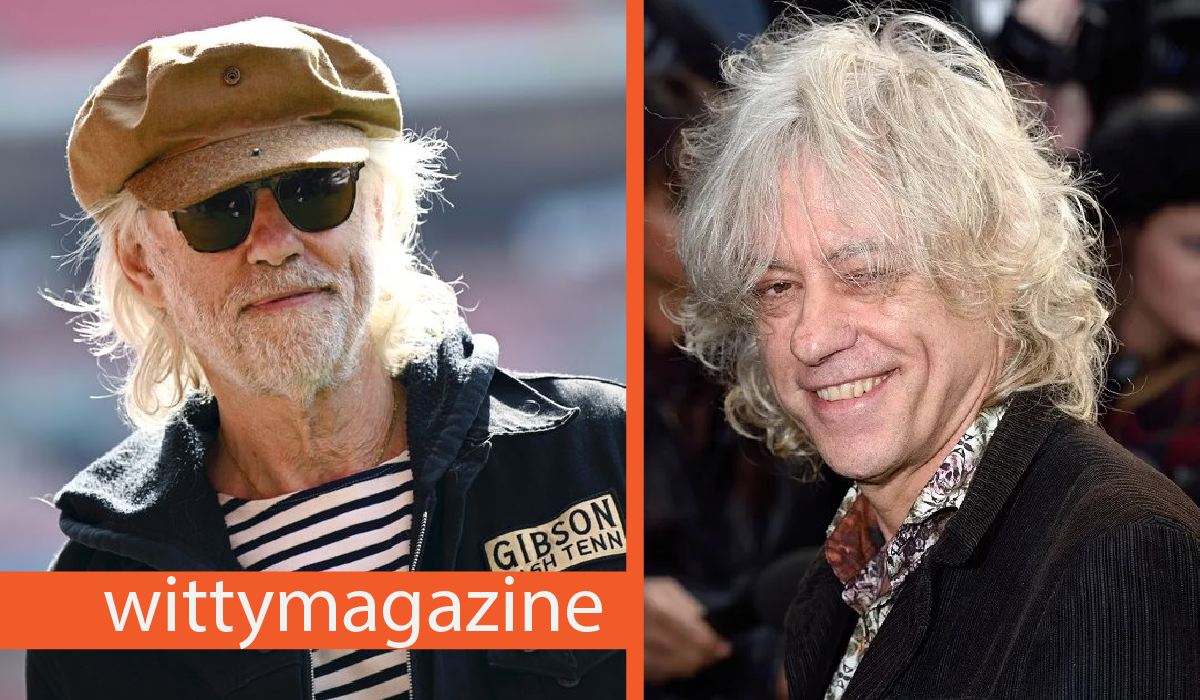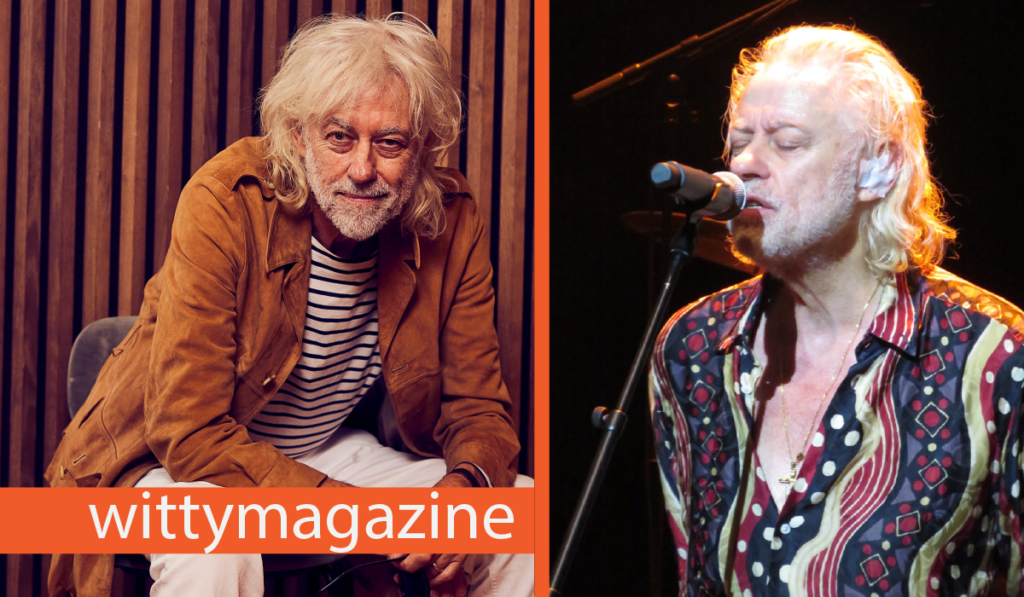“Bob Geldof Hootenanny Backlash” is the shorthand the internet latched onto after the Boomtown Rats frontman’s New Year’s Eve turn on Jools Holland’s Annual Hootenanny, a long-running BBC Two celebration that blends living-room warmth with big-room star power; the 2024/25 edition put Geldof back under the lights—and under the microscope—as a trivial stage habit became a trending flashpoint that overshadowed a night designed for communal cheer, reminding us how quickly modern audiences transform small details into big debates and how the scrutiny attached to fame often competes with the music itself for attention, especially when the performer is a figure whose cultural biography spans punk rebellion, pop hits, and epoch-defining charity work.
What Happened at the 2024 Hootenanny
The New Year’s Eve special aired on BBC Two and iPlayer from 11:30 p.m. on December 31, 2024, with Jools Holland leading his orchestra through the count-down while introducing a lineup designed to connect generations: CMAT, Kathy Sledge (Sister Sledge), Queen’s Roger Taylor, Jungle, JADE, Marc Almond, Paul Carrack, Ruby Turner, Toby Lee, The Dead South, and The Boomtown Rats, whose appearance carried added resonance with the band’s 50th anniversary on the horizon; Holland introduced the Rats as “true legends,” and viewers saw a set anchored in the band’s late-70s/early-80s catalog, with the format mixing performance and brief interview segments in the show’s familiar conversational style.
The Spark — Bob Geldof’s Gum-Chewing Incident
The “Bob Geldof Hootenanny Backlash” coalesced within minutes of broadcast as viewers noticed Geldof chewing gum not only during musical numbers but also during cutaways and couch chat, a visual loop that some found distracting and incongruous with the show’s polished framing; social posts framed the habit as “off-putting” or “ridiculous,” and while the behavior was banal in isolation, the camera’s repetitions magnified it into a meme-ready motif—proof that on a night when many watch with family, even minor stagecraft choices can tilt audience focus from sound to image and trigger a cascade of hot takes.
More From Info: Who Is Amber Lynn Curry? The Tragic Story of The D.O.C.’s Daughter
Social Media Reactions — Outrage, Humor, and Defense
The first wave was outrage and mockery: under the #Hootenanny umbrella, posts accused Geldof of “chewing through the songs,” joked about dentures, and labeled the habit disrespectful, with aggregated entertainment write-ups amplifying the tone; a second wave turned the moment into humor, folding screenshots into quick-fire memes; then came the counter-current, as fans highlighted Geldof’s enduring stage presence and distinctive voice, arguing that a veteran punk’s scruffy authenticity is part of the package—an opinion also captured in coverage that quoted viewers praising him as “amazing live,” illustrating the classic social cycle where speed, virality, and algorithmic recirculation harden a split into two camps.

Appearance and Age — The Criticism Beyond the Gum
Criticism quickly expanded beyond the gum to fixate on Geldof’s look—hair, tailoring, and the supposed mismatch between a festive studio set and a 73-year-old rock icon’s insouciant aesthetic—an escalation that exposes a persistent current of ageism in pop discourse: older performers are often judged against the airbrushed standards of youth TV while their longevity gets reframed as “past it”; yet, the same telecast featured multiple heritage acts, and peers in their late 70s or 80s (from Jagger to McCartney) continue to headline arenas, a context that suggests the backlash says as much about audience expectations as it does about any one artist’s wardrobe on the night.
Support and Positive Reactions
The “Bob Geldof Hootenanny Backlash” never became a unanimity; alongside the snark were many posts and comments celebrating a still-recognizable voice and the nostalgic charge of hearing “Rat Trap” or “I Don’t Like Mondays” in a communal New Year setting, with fans stressing that the band’s presence linked 1970s punk-adjacent energy to a 2024 TV tradition and noting that the anniversary year ahead made the booking feel timely rather than tokenistic—sentiments reflected in show-night roundups that placed the Rats within a broad, intergenerational bill rather than isolating the segment as a controversy in a vacuum.
The BBC and the Broader Backlash
Some of the criticism spilled over onto the program itself, with viewers debating whether the Hootenanny formula had grown stale and whether the 2024/25 mix of heritage names and current chart presences struck the right balance for a New Year’s broadcast, a familiar argument on UK entertainment forums each December that flared again this year; nevertheless, listings outlets and music press positioned the lineup as “stellar” and emphasized the show’s perennial role as the Beeb’s midnight tent-pole, illustrating a recurring fissure between a tradition’s defenders and those who demand faster rotation of new acts on marquee seasonal TV.
Understanding the Dual Nature of Celebrity Backlash
The speed with which “Bob Geldof Hootenanny Backlash” went from observation to trending label illustrates the duality of celebrity in the social era: the same visibility that once built myth now ensures micro-gestures become macro-narratives, with clips clipped and re-posted until the behavior seems larger than the performance; this dynamic is supercharged for polarizing figures whose public personae include decades of candid interviews and activism, because parasocial attachment—built on songs, causes, and memories—turns viewers into stakeholders who read a stray habit as a signal about authenticity, respect, or relevance, compressing complex legacies into split-second judgments at broadcast speed.
More From Info: Darez Diggs: The Inspiring Football Journey Beyond NFL Fame
Linking the Backlash to Activism and Past Controversies
Geldof’s history as a campaigner means any fresh noise around him resonates beyond music: the 40th-anniversary “Do They Know It’s Christmas?” discussions in late 2024—featuring critiques from Ed Sheeran and producer Mike Stock and rebuttals from Geldof about intent and impact—primed the media ecosystem to parse his choices through a moral lens; thus, when a trifle like gum-chewing surfaced weeks later, observers imported those debates into the New Year’s frame, reading an on-camera tic as a proxy for larger arguments about tone, representation, and how icons steward their legacies in present-tense culture.
Geldof’s Response — Or Silence
At time of writing there has been no direct, widely reported statement from Geldof about the Hootenanny moment, a choice that fits a common PR calculus: where a flare-up is rooted in a transient broadcast image rather than a factual dispute, silence lets the cycle burn out while avoiding the “second-day story” that a rebuttal often generates; it also mirrors his stance during the late-2024 Band Aid discourse, when he acknowledged critics while reframing the conversation toward outcomes—funds raised, hunger awareness—arguing that debate keeps the cause visible even when opinions diverge, a strategy that prioritizes long-term reputational arcs over short-term clap-backs.
Age, Authenticity, and the Changing Face of Rock Stardom
The “Bob Geldof Hootenanny Backlash” is ultimately a referendum on how audiences read authenticity in 2025: classic rock charisma once relied on visible nonchalance—gum, smirk, rumpled suit—as an index of credibility, while contemporary prime-time norms reward media-trained polish; when a veteran chooses the former on a family-friendly stage, some viewers experience dissonance, but others perceive continuity with a punk-born persona, and the friction between those readings signals a broader shift in pop culture presentation—less about whether an artist “should” behave a certain way and more about how plural audiences negotiate competing codes of respect, rebellion, and showmanship inside the same televised moment.
The Boomtown Rats — Legacy and What’s Next
For all the noise, the band’s long arc remains the sturdier story: formed in 1975, the Boomtown Rats helped punk’s attitude breach the pop charts, notching the first Irish act’s UK No. 1 with “Rat Trap” and etching “I Don’t Like Mondays” into radio rotation for decades; the Hootenanny booking placed those songs in front of a broad cross-generational audience just as a 50th-anniversary year arrives, with listings coverage and music press reminding viewers that New Year’s TV thrives on precisely this blend of heritage and contemporary energy, a programming logic that explains why the Rats were on the same card as Jungle and CMAT and why, controversies aside, the set worked for many at home.
Lessons from the “Bob Geldof Hootenanny Backlash”
The key lesson for artists, producers, and audiences is that small habits can eclipse big talents once a camera’s feedback loop and social media’s amplification kick in; creators planning mass-audience broadcasts should consider a “live optics” checklist (what reads as punk-casual in a club might read as careless in a living-room show), while viewers might benefit from remembering that a single looped GIF flattens context—songcraft, arrangement, and the communal joy of a New Year telecast—into a meme; the constructive path lies between: hold icons to professional standards without weaponizing age or appearance, and critique with an ear for the music that brought everyone to the screen.
Conclusion
“Bob Geldof Hootenanny Backlash” encapsulates the paradox of New Year’s TV and modern celebrity: a venerable format with a multigenerational lineup, a single performer’s minor tic becoming the story, and an audience split between reverence for a legend and impatience with anything that jars the vibe; yet, because the Rats’ songs still land and because Geldof’s cultural footprint still invites engagement, the night doubled as a reminder that icons seldom fade quietly—especially when the culture keeps asking them to be simultaneously timeless and perfectly attuned to the present.
FAQs
1. What caused the “Bob Geldof Hootenanny Backlash”?
The backlash began after Bob Geldof’s appearance on Jools Holland’s Annual Hootenanny on December 31, 2024. Viewers noticed that Geldof was chewing gum throughout his performance and interviews, which many found distracting and unprofessional. This seemingly small habit sparked widespread criticism and debate on social media, overshadowing what was meant to be a celebratory New Year’s Eve show.
2. Why did fans criticize Bob Geldof’s appearance?
Some viewers took issue with Geldof’s casual and slightly disheveled appearance during the televised show. At 73, his relaxed look and carefree stage demeanor clashed with the show’s polished aesthetic. Critics described him as looking “unkempt,” while supporters argued that his authenticity and nonconformist style are trademarks of his long-standing rock persona.
3. How did social media react to Geldof’s performance?
Social media platforms like X (formerly Twitter) exploded with comments under hashtags such as #Hootenanny and #GeldofGum. While many users mocked or criticized his gum-chewing, others defended him, calling the backlash an overreaction. Memes, jokes, and debates spread rapidly, turning the performance into one of the most talked-about TV moments of New Year’s Eve 2024.
4. Did Bob Geldof respond to the controversy?
As of early 2025, Bob Geldof has not publicly commented on the backlash. His silence may be strategic—avoiding adding fuel to a short-lived controversy. Known for his outspoken activism and confidence, Geldof has previously weathered criticism over his views and projects, so his lack of response suggests he’s choosing to focus on his music and upcoming Boomtown Rats anniversary tour.
5. What’s next for Bob Geldof and The Boomtown Rats?
The Boomtown Rats are set to celebrate their 50th anniversary in 2025, with plans for a tour and possible new music releases. Despite the online chatter, many fans are excited to see the band return to the stage. The incident may have reignited public interest in Geldof’s career, proving that—even amid controversy—he remains a relevant and influential figure in rock history.


